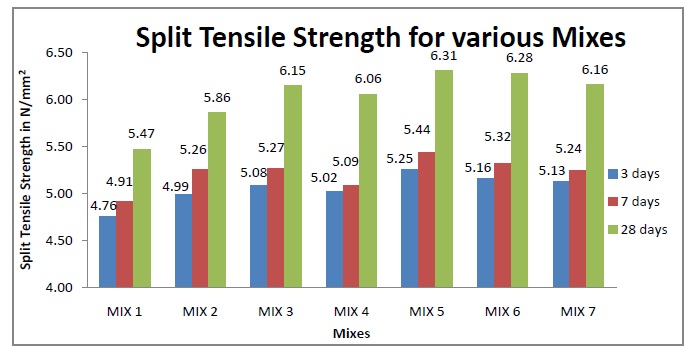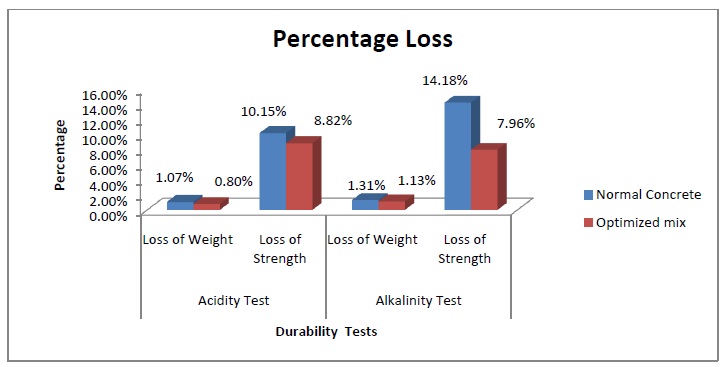





Published on Nov 30, 2023
Concrete is one of the world's most widely used construction material. The term concrete refers to a mixture of aggregates, usually sand, and either gravel or crushed stone, held together by a binder of cementitious paste. This paste is typically made up of cement and water.
Cement is produced worldwide annually with rapid increase in demand. The production of such cement includes enormous energy consumption and greenhouse gas emission to environment. Hence it is necessary to introduce a new technology to develop alternative binders. Using nanotechnology for producing nano cement may be considered as a potential approach. The nanomaterials are mainly used to enhance various physio-chemical properties of the cementations materials such as crack resistance, corrosion resistance, tensile strength and compressive strength.
Keywords : NanoSilica, NanoVanadium, Concrete
1. To study the effect of mixture of NanoSilica and NanoVanadium in various ratio on strength and durability characteristics of concrete.
2. Chemical synthesis and size characterization of Silica and Vanadium nano-particles in laboratory.
3. Concrete mix will be prepared by partial replacement of cement by 1-3% by weight with NanoSilica and 0.1% with NanoVanadium along with required aggregates.
4. The fresh properties of nano-concrete mix will be tested and then casted into cube and cylindrical moulds.
5. The casted cube and cylindrical specimens will be cured and tested for strength and durability characteristics.
6. The effect of nano particles on microstructure of the hardened cement concrete will be studied.
NanoSilica used in the present work is purchased from Astra Chemicals Chennai. Based on the literature survey NanoVanadium is synthesized by sol-gel auto-combustion method. The obtained nanoparticle were characterized through using UV, SEM, EDS and XRD. Basic tests ie, specific gravity, fineness, standard consistency, initial setting and final setting is conducted for cement; specific gravity, fineness modulus and bulk density is conducted for fine aggregate and coarse aggregate based IS code specifications.
Concrete mix proportion is calculated for M20 grade concrete based on IS 10262:2009 code provisions for 7 mixes ie, NC (Normal Concrete), NC+1%NS, NC+2%NS, NC+3%NS, NC+1%NS+0.1%NV, NC+2%NS+0.1%NV and NC+3%NS+0.1%NV and for each mix concrete is casted into 9 cubes and 9 cylindrical moulds. The cubes and cylinders are tested to determine the compressive and split tensile strength after 3, 7 and 28 days of curing. Out of 7 mixes optimum mix which exhibits higher strength is again castes into 6 cubes and cured for 28days. After 28 days of curing, cubes are taken out and allowed to dry for 1 day and then out of 6, 3 cubes are immersed in bucket of water containing 5% of H2SO4 by weight of water and another 3 cubes are immersed in bucket of water containing 5% of NaOH by weight of water for acidity and alkalinity test. Before immersing the cubes dry weight of cubes are taken and after 28 days of immersion, cubes are tested for 3, 7 and 28 days to determine the loss of weight and compressive strength and results are tabulated.

The above graph indicates the compressive strength of concrete for 7 mixes varies by 0.96%, 2.31%, 1.66%, 6.55%, 6.28% and 6.01% of normal conventional concrete after 28 days of curing.

The above graph indicates the split tensile strength of concrete for 7 mixes varies by 7.12%, 12.43%, 10.78%, 15.35%, 14.8% and 12.61% of normal conventional concrete after 28 days of curing.

The above graph indicates the loss of weight and loss in compressive strength values for normal concrete and optimized mix when treated with 5% H2SO4 for acidity test and 5% NaOH for alkalinity test and it was observed that, loss of weight and compressive strength is less when compared to normal concrete.
1. By Replacing 1% NS and 0.1% NV by weight of cement, 6.55 % of Compressive strength and 15% of Split tensile strength is achieved when compared to Normal Conventional concrete
2. By addition of NV along with NS to the concrete mix, Compressive strength of about 65% of design strength is achieved for 7 days of curing because of its catalytic nature.
3. Therefore maximum compressive strength of concrete can be achieved within 18-20 days of curing instead of 28 days.
4. For 1%NS and 0.1%NV by weight of cement, loss of weight and Compressive strength is less for both Acidity and Alkalinity test when compared with Normal Concrete
1. Concrete with different sizes of NanoSilica particles can be mixed to study the strength and durability characteristics.
2. NanoSilica with different grades of concrete can be studied.
3. Present work can be done by using Mineral admixtures hoping the NanoVanadium may influence the activation of Mineral admixtures.
4. NanoSilica with different percentage can be mixed with cement to study the Compressive strength of Mortar
5. Micro-biological activity of concrete can be studied.
1. Microstructure of cement mortar with nanoparticles. Composites: Part B 35, 185-189.
2. Tao Ji, 2005. Preliminary Study on Water Permeability and Microstructure of Concrete Incorporating Nano- sio2. Cement and Concrete Research 35, 1943- 194.
3. IS: 383-1970 "Indian Standard Specification for Coarse and Fine Aggregates from Natural Sources for Concrete (Second Revision)", Ninth Reprint September 1993.
4. ASTM C94, "American Society for Testing and Materials - C94".
5. IS: 2386 (Part IV) - 1963 "Indian Standard Methods of Test for Aggregates for Concrete (Part IV) Mechanical Properties", Tenth Reprint March 1997.
6. IS: 456-2000 "Indian Standard Plain and Reinforced Concrete - Code Of Practice" (Fourth Revision).